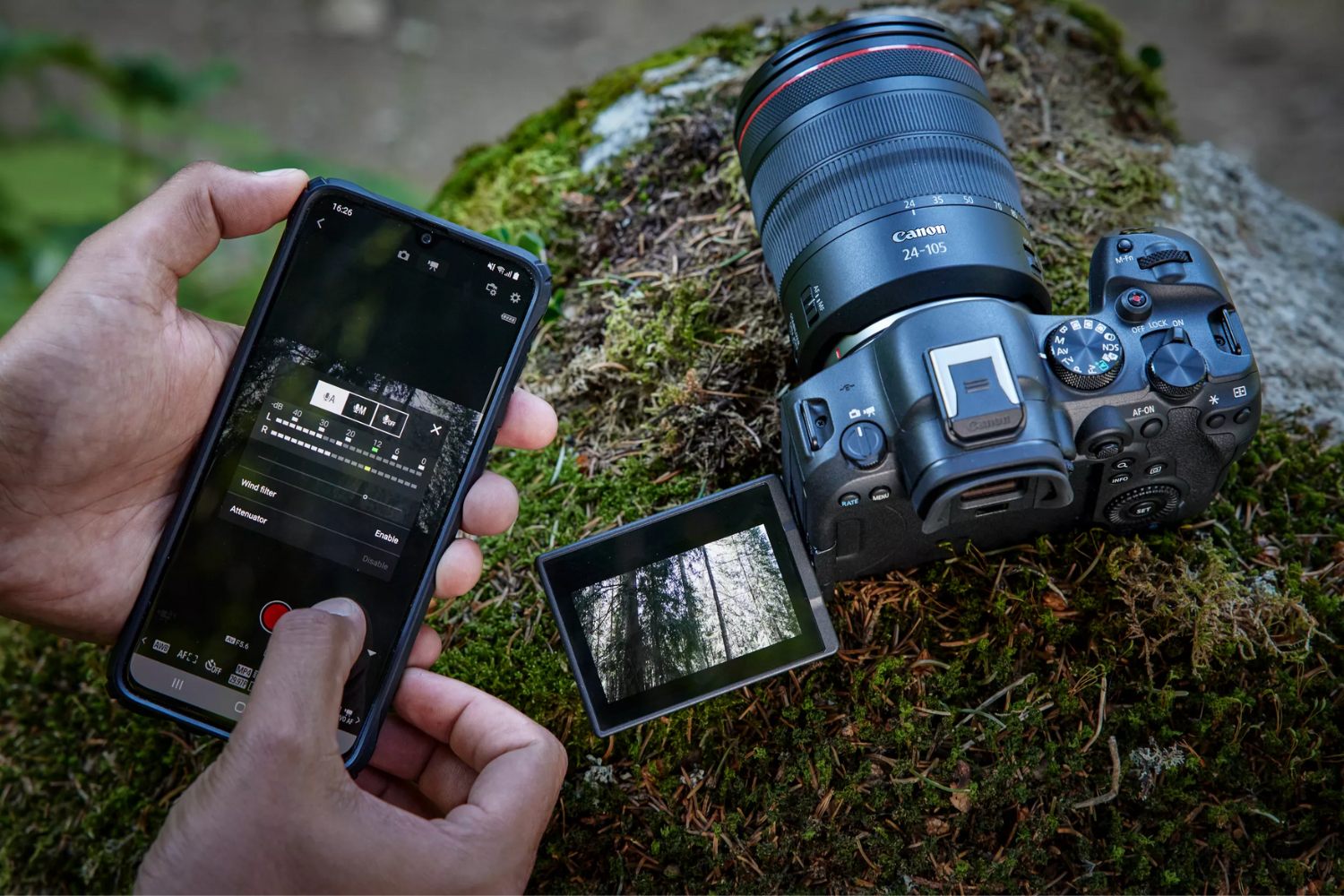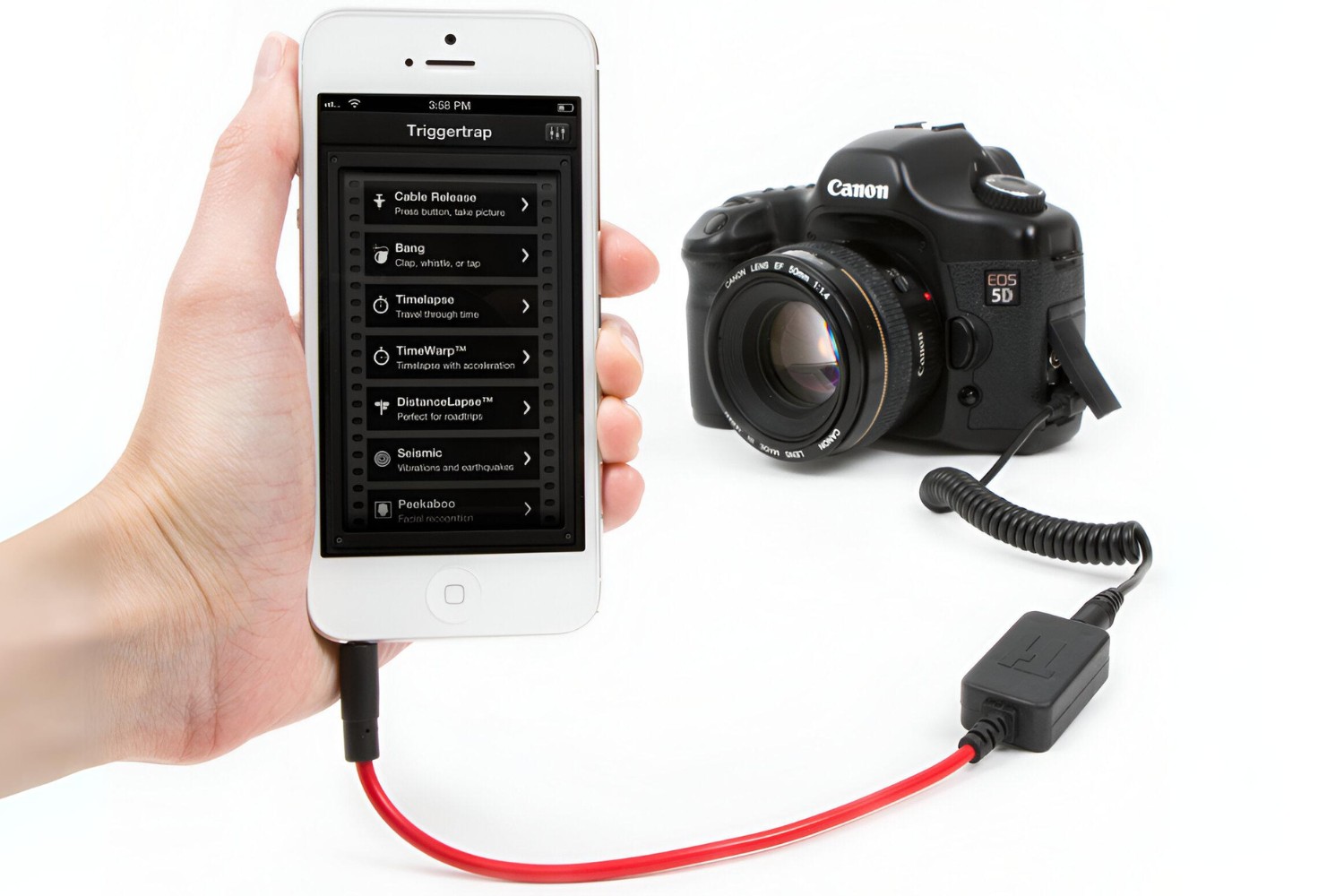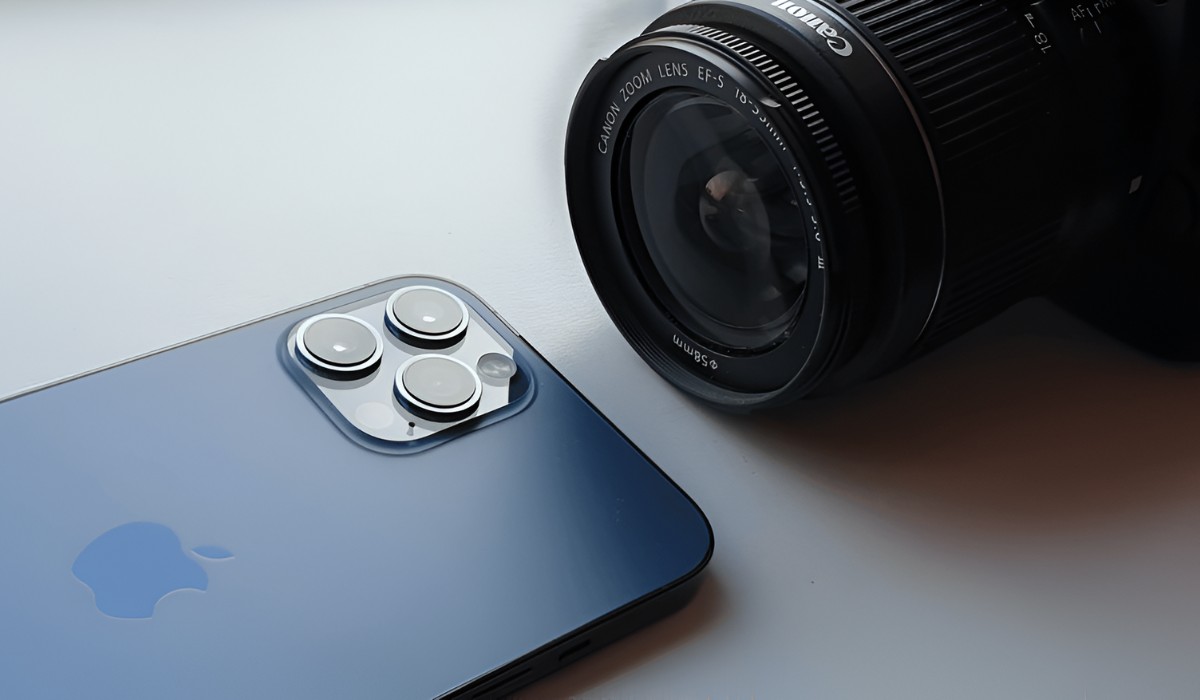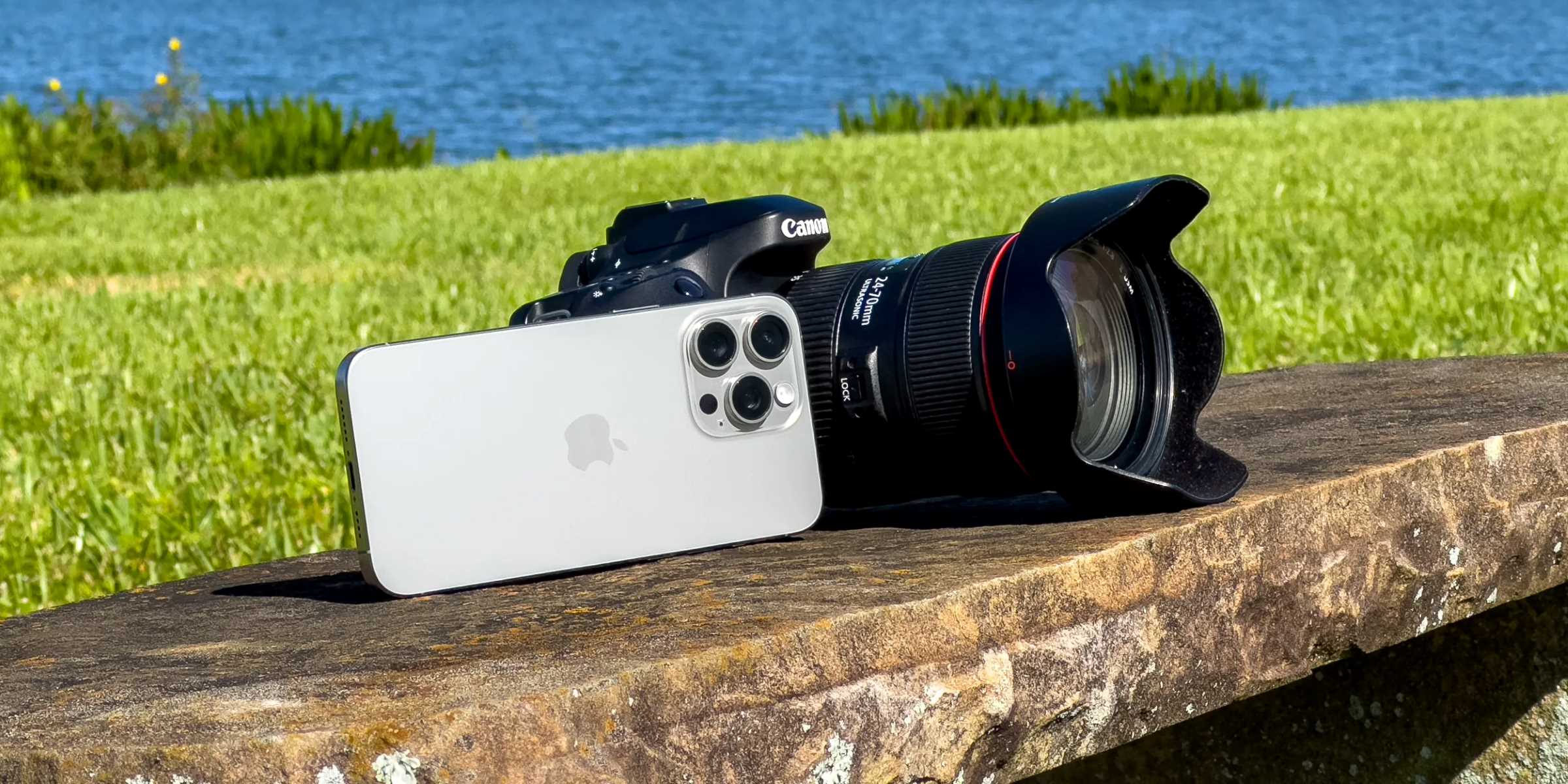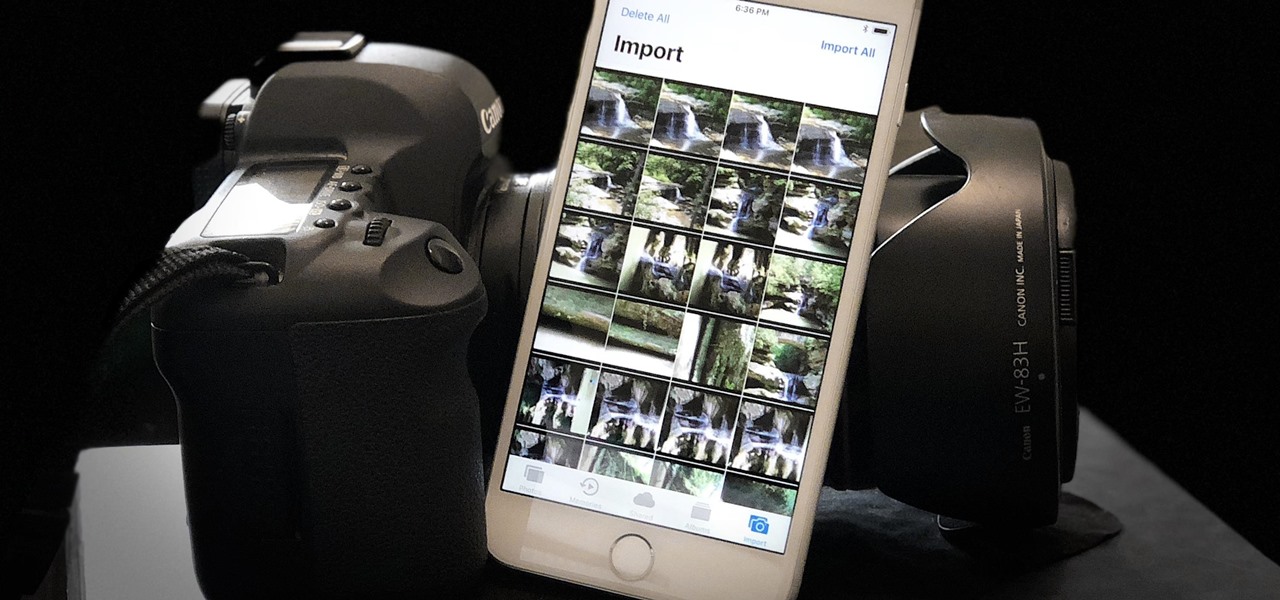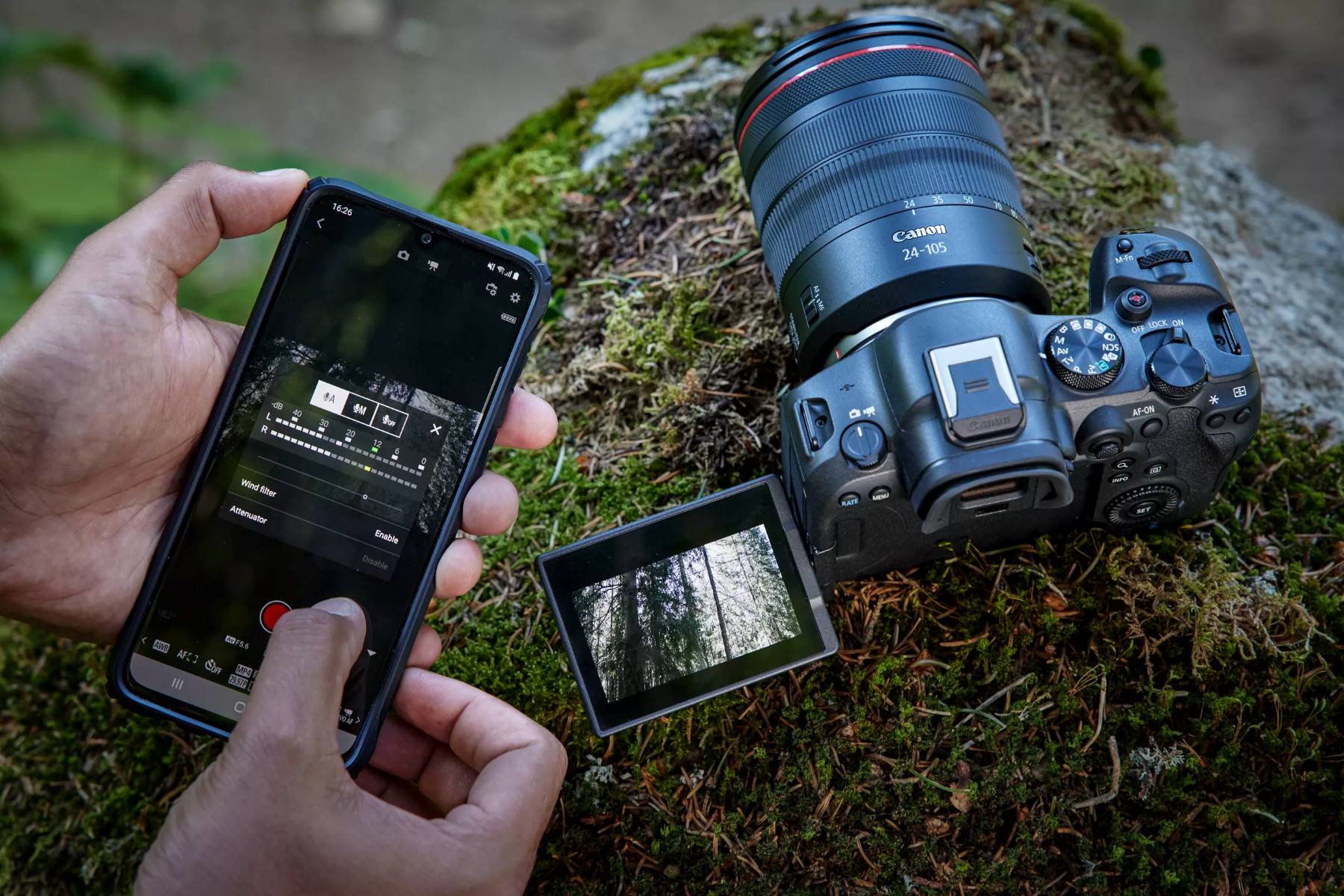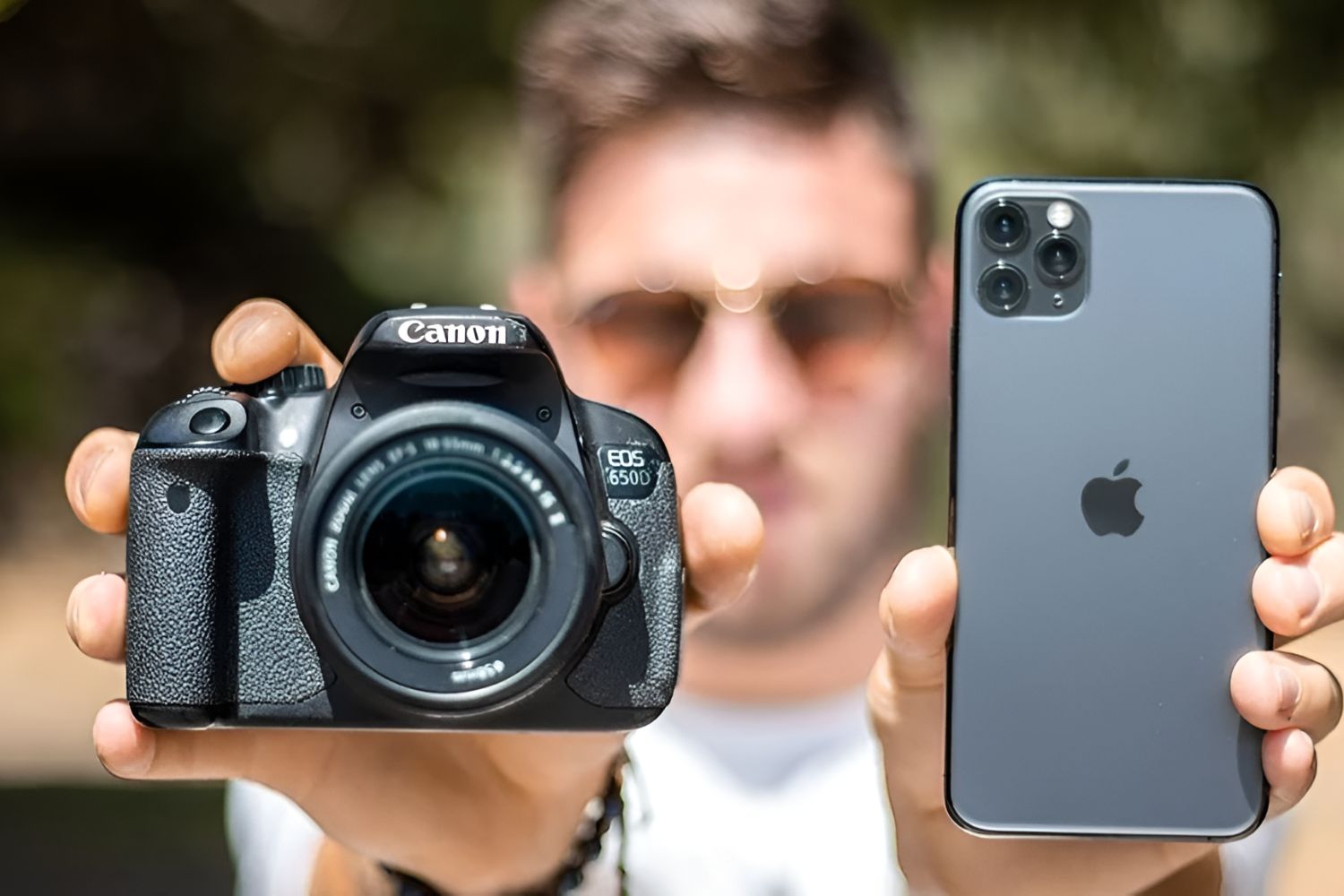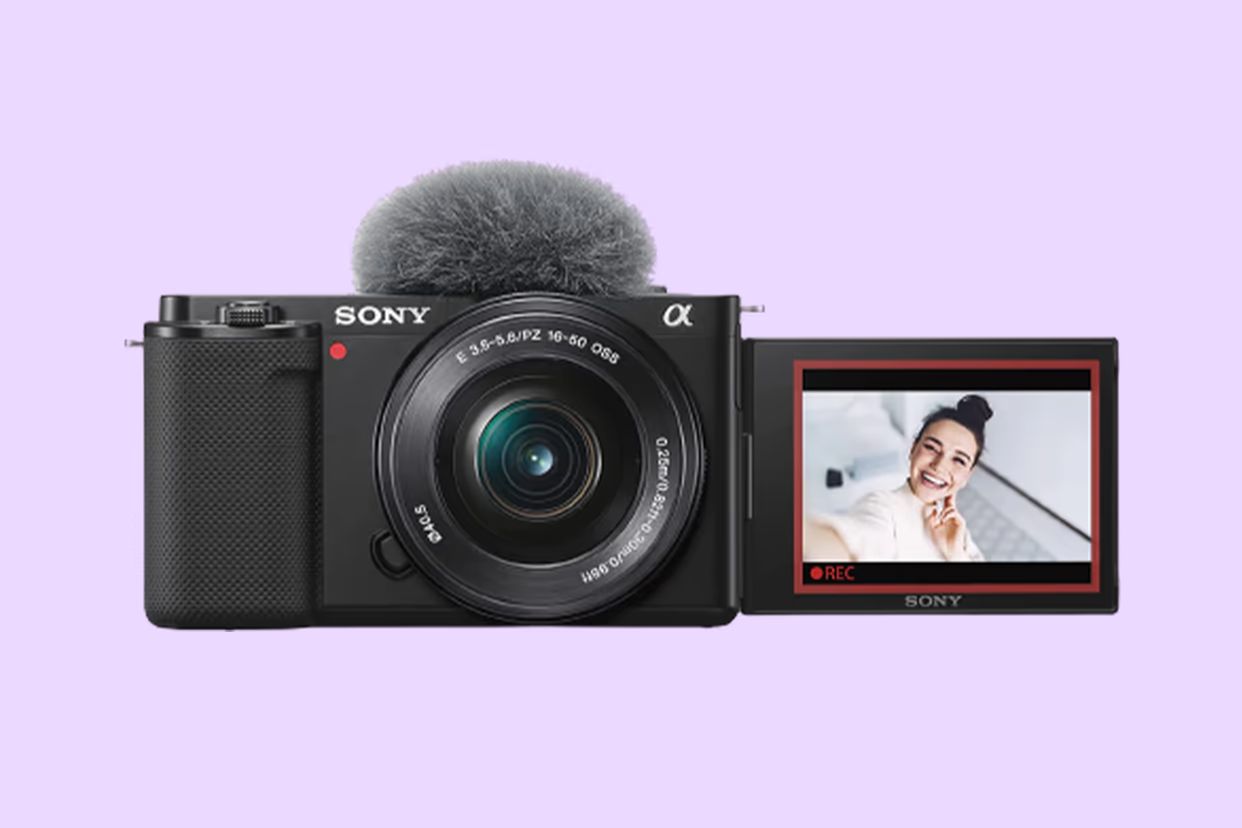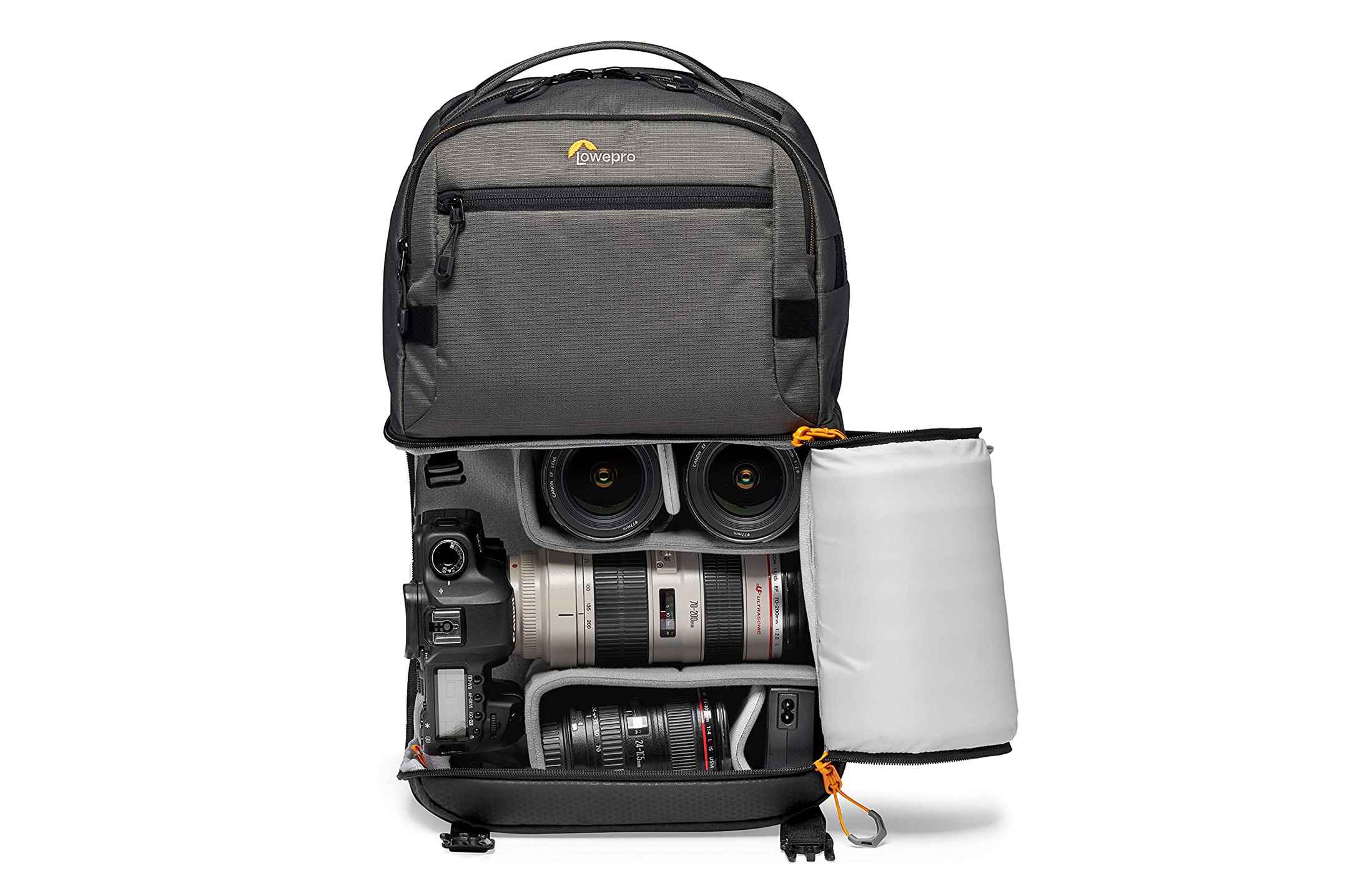Introduction
Are you eager to share your stunning DSLR photos on social media in real-time? Or do you want to remotely control your camera to capture that perfect shot without having to touch it? Connecting your DSLR camera to your phone can unlock a world of possibilities, from instant photo sharing to remote shooting and editing. In this guide, we'll explore the steps to connect your DSLR camera to your phone, opening up a realm of creative opportunities for photography enthusiasts and professionals alike.
Whether you're using a Canon, Nikon, Sony, or another brand of DSLR camera, the process of connecting it to your phone is relatively straightforward. By following a few simple steps, you can harness the power of your DSLR camera and the convenience of your smartphone to elevate your photography game.
In the following sections, we'll delve into the essential steps to connect your DSLR camera to your phone, from checking camera compatibility to transferring and controlling photos. By the end of this guide, you'll be equipped with the knowledge and tools to seamlessly bridge the gap between your DSLR camera and your phone, empowering you to capture, edit, and share your photographic masterpieces with ease. Let's embark on this journey to unlock the full potential of your DSLR camera and smartphone combination.
Step 1: Check Camera Compatibility
Before diving into the process of connecting your DSLR camera to your phone, it’s crucial to ensure that your camera is compatible with the necessary connectivity features. Most modern DSLR cameras are equipped with built-in Wi-Fi or Bluetooth capabilities, enabling seamless wireless communication with smartphones. However, it’s essential to verify whether your specific camera model supports these wireless connectivity options.
To determine the compatibility of your DSLR camera, refer to the user manual or visit the manufacturer’s official website for detailed specifications. Look for information related to wireless connectivity, including Wi-Fi and Bluetooth functionality. Additionally, you can explore online forums and photography communities to seek advice from fellow enthusiasts who may have experience with connecting your particular camera model to a smartphone.
If your DSLR camera lacks built-in Wi-Fi or Bluetooth, all hope is not lost. In such cases, you can explore alternative solutions, such as utilizing a compatible USB cable or investing in a third-party wireless adapter that is compatible with your camera model. These adapters can often provide the missing link between your DSLR camera and your smartphone, enabling wireless communication and control.
By taking the time to confirm your camera’s compatibility with wireless connectivity features, you’ll set the stage for a smooth and successful connection process. Whether your camera boasts integrated wireless capabilities or requires additional accessories, this initial step is pivotal in laying the foundation for a seamless integration between your DSLR camera and your smartphone.
Step 2: Get the Right Cable or Adapter
Once you’ve verified the compatibility of your DSLR camera with wireless connectivity options, the next step is to acquire the appropriate cable or adapter to facilitate the connection to your phone. Depending on your camera model and the available connectivity features, you may need a specific USB cable or a wireless adapter to establish the link between your camera and smartphone.
If your DSLR camera supports USB connectivity, it’s essential to identify the type of USB port it utilizes. Some cameras feature a standard USB Type-A port, while others may employ a Micro-USB or USB-C port. Understanding the specific USB interface of your camera will guide you in selecting the corresponding cable that can connect to your phone, considering its USB port type as well.
Alternatively, if your camera lacks built-in wireless capabilities and you’re seeking a wireless connection, you can explore the option of investing in a compatible wireless adapter. These adapters are designed to interface with your DSLR camera and establish a wireless connection with your smartphone, enabling seamless photo transfer and remote control functionalities.
When choosing a wireless adapter, ensure that it is compatible with your camera model and offers the necessary features for wireless communication. Researching user reviews and seeking recommendations from photography communities can provide valuable insights into the reliability and compatibility of various wireless adapters available in the market.
By obtaining the right cable or adapter tailored to your DSLR camera’s connectivity requirements, you’ll be equipped with the essential hardware to bridge the gap between your camera and smartphone. Whether it’s a direct USB connection or a wireless adapter solution, this pivotal step sets the stage for establishing a seamless and reliable link for transferring and controlling your photographic content.
Step 3: Install the Necessary App
With your DSLR camera and the appropriate cable or adapter at the ready, the next vital step in the process of connecting your camera to your phone is to install the necessary app. Many camera manufacturers offer dedicated mobile applications designed to facilitate seamless communication between DSLR cameras and smartphones. These apps typically provide a range of features, including wireless photo transfer, remote shooting, and camera settings control.
Head to the official app store for your smartphone platform, whether it’s the Apple App Store for iOS devices or the Google Play Store for Android devices, and search for the official app provided by your camera’s manufacturer. For example, Canon offers the “Canon Camera Connect” app, Nikon provides the “SnapBridge” app, and Sony offers the “Imaging Edge Mobile” app, among others. Download and install the app that corresponds to your camera model.
Upon installing the app, ensure that your smartphone is connected to a stable Wi-Fi network or cellular data connection, as the app may require internet access for initial setup and firmware updates. Once the app is installed, launch it and follow the on-screen instructions to pair it with your DSLR camera. This typically involves enabling Wi-Fi or Bluetooth on your camera and selecting it from the list of available devices within the app.
After successfully pairing your camera with the app, you’ll gain access to a suite of features that enable seamless communication and control. These may include the ability to wirelessly transfer photos from your camera to your phone, remotely adjust camera settings, and even capture photos using your smartphone as a remote trigger. Familiarize yourself with the app’s interface and features to leverage the full potential of this connectivity bridge between your DSLR camera and smartphone.
By installing the necessary app provided by your camera’s manufacturer, you’ll establish a crucial link that empowers you to harness the wireless capabilities of your DSLR camera and seamlessly integrate it with your smartphone. This step paves the way for effortless photo transfer, remote shooting, and enhanced control over your photographic endeavors.
Step 4: Connect the Camera to the Phone
With the necessary app installed and your DSLR camera ready for connectivity, it’s time to establish the crucial link between your camera and your phone. Depending on the connectivity options available on your camera and the specific features offered by the installed app, there are various methods to connect the two devices seamlessly.
If your camera supports built-in Wi-Fi or Bluetooth connectivity, navigate to the wireless settings on your camera and enable the corresponding feature. Once activated, your camera will emit a Wi-Fi network or Bluetooth signal that your smartphone can detect. Access the Wi-Fi or Bluetooth settings on your phone and select the network or device corresponding to your camera. Follow any on-screen prompts to complete the pairing process, ensuring that both devices are connected to the same network or via Bluetooth.
For cameras that rely on USB connectivity, connect the appropriate USB cable from your camera to your smartphone. Depending on your phone’s operating system, you may need to download a USB driver or photo transfer app to facilitate the connection and enable file transfer between the two devices. Once the USB connection is established, your phone should recognize the camera as an external storage device, allowing you to access and transfer photos and videos seamlessly.
When using a wireless adapter, follow the manufacturer’s instructions to pair the adapter with your camera and connect it to your smartphone. This typically involves configuring the adapter’s wireless settings and establishing a connection through the dedicated app installed on your phone. Once the adapter is paired and the connection is established, you can leverage the wireless link to transfer photos, remotely control your camera, and explore a range of creative possibilities.
Upon successfully connecting your camera to your phone, take a moment to verify the stability of the connection and ensure that both devices are communicating effectively. Test the wireless photo transfer functionality, remote shooting capabilities, and any additional features offered by the app to confirm the seamless integration between your DSLR camera and smartphone.
By establishing a reliable connection between your DSLR camera and phone, you’ll unlock the potential for effortless photo transfer, remote control, and seamless integration, empowering you to elevate your photography experience and creativity.
Step 5: Transfer and Control Photos
Having successfully connected your DSLR camera to your phone, you are now poised to leverage the seamless integration for effortless photo transfer and enhanced control over your photographic content. Whether you’re keen on sharing your latest captures on social media or remotely capturing stunning images, the ability to transfer and control photos between your camera and smartphone opens up a realm of creative possibilities.
One of the primary advantages of connecting your DSLR camera to your phone is the ability to transfer photos wirelessly. Utilizing the dedicated app provided by your camera’s manufacturer, you can initiate wireless photo transfer from your camera to your smartphone with ease. This streamlined process eliminates the need for cumbersome cables and allows you to swiftly access and share your high-quality DSLR photos on various platforms, directly from your phone.
Furthermore, the integration between your DSLR camera and smartphone empowers you to remotely control your camera’s settings and capture images from a distance. Whether you’re setting up a group photo, capturing wildlife from a discreet vantage point, or experimenting with long exposures, the app’s remote control features enable you to adjust camera settings and trigger the shutter from your phone, offering unparalleled flexibility and creative control.
Additionally, some camera apps provide the functionality to view a live feed from your camera’s viewfinder directly on your smartphone screen. This real-time preview feature allows you to compose and capture shots with precision, leveraging the larger display and touch interface of your phone to enhance your photography experience.
As you explore the capabilities of wireless photo transfer and remote control, familiarize yourself with the app’s interface and features to maximize the potential of this integration. Experiment with different shooting scenarios, from long-exposure night photography to candid street shots, and leverage the convenience and flexibility afforded by the seamless connection between your DSLR camera and smartphone.
By harnessing the power to transfer photos wirelessly and remotely control your DSLR camera from your phone, you’ll elevate your photography experience, enabling you to capture, edit, and share your visual narratives with unparalleled convenience and creative freedom.
Conclusion
Congratulations! You’ve embarked on a journey to seamlessly connect your DSLR camera to your phone, unlocking a wealth of creative opportunities and convenience in the world of photography. By following the essential steps outlined in this guide, you’ve established a seamless integration between your DSLR camera and smartphone, empowering you to transfer photos wirelessly and remotely control your camera with ease.
Through the process of checking your camera’s compatibility, acquiring the right cable or adapter, installing the necessary app, and establishing the connection between your camera and phone, you’ve laid the groundwork for a harmonious collaboration between these two powerful devices. Whether you’re a photography enthusiast seeking to share your visual stories in real-time or a professional photographer aiming to enhance your workflow, the fusion of DSLR and smartphone capabilities offers unparalleled flexibility and creative control.
With the ability to wirelessly transfer high-quality photos from your DSLR camera to your smartphone, you can seamlessly share your visual narratives on social media, blogs, or with friends and family, all from the palm of your hand. The convenience of remote control functionality enables you to capture stunning images from unique perspectives, experiment with long exposures, and exercise precise creative control over your photographic endeavors.
As technology continues to bridge the gap between traditional photography and digital connectivity, the integration of DSLR cameras with smartphones represents a paradigm shift in the way we capture, edit, and share visual content. This seamless synergy empowers photographers to transcend the limitations of traditional workflows and embrace a new era of creative expression, where the fusion of high-quality DSLR imagery and the convenience of smartphone connectivity converge.
Armed with the knowledge and practical insights gained from this guide, you now possess the tools to harness the full potential of your DSLR camera and smartphone combination. Embrace the freedom to capture, transfer, and control your photographic content with unparalleled convenience and creative flexibility, and let your visual narratives unfold with seamless integration and boundless creativity.







